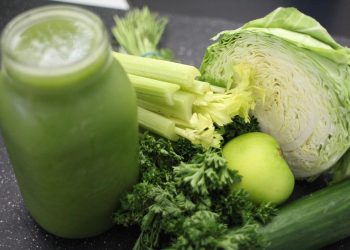Chronic pain can feel like an unwelcome guest who never leaves. It disrupts your daily life, steals your joy, and sometimes, you may feel entirely alone in your struggle. But here’s the good news: there are natural remedies to alleviate chronic pain effectively that can empower you to take control of your well-being. Let’s explore these remedies together, and find a path toward relief and renewed vitality.
Contents
- Understanding Chronic Pain
- 1. Turmeric: The Golden Spice
- 2. Essential Oils: Nature’s Aromatherapy
- 3. Mindfulness Meditation: Your Inner Sanctuary
- 4. Acupuncture: Ancient Wisdom for Modern Pain
- 5. Physical Activity: Move to Heal
- 6. Heat and Cold Therapy: Simple Yet Effective
- 7. Herbal Supplements: Nature’s Medicine Cabinet
- Bottom Line
Understanding Chronic Pain
Chronic pain is more than just a physical sensation; it’s an experience that can affect your emotional and mental health too. Defined as pain that lasts longer than three months, it can stem from various conditions, including arthritis, fibromyalgia, and nerve damage. This isn’t just discomfort; it can lead to anxiety, depression, and a diminished quality of life.
When you’re caught in the cycle of chronic pain, finding effective, sustainable solutions is vital. You deserve to live without the constant shadow of pain hanging over you.
1. Turmeric: The Golden Spice
Let’s kick things off with turmeric, often dubbed the “golden spice.” This vibrant yellow root is not just a kitchen staple; it’s a powerhouse of anti-inflammatory properties. Curcumin, the active ingredient in turmeric, has shown promise in reducing pain and inflammation.
How to Use Turmeric
- Turmeric Tea: Brew a soothing cup by simmering 1 teaspoon of turmeric powder in 4 cups of water. Add honey and lemon to taste.
- Golden Milk: Mix turmeric with warm milk (or plant-based milk) and a pinch of black pepper. This not only tastes divine but maximizes absorption.
- Supplements: If you’re not a fan of the flavor, consider curcumin supplements. Just be sure to consult your healthcare provider first!
For more information on turmeric benefits, check out the National Center for Complementary and Integrative Health.
2. Essential Oils: Nature’s Aromatherapy
Imagine inhaling the sweet scent of lavender or the uplifting aroma of peppermint. Essential oils are not just for making your home smell delightful; they can also help alleviate chronic pain. Certain oils can reduce inflammation, improve mood, and promote relaxation.
Popular Essential Oils for Pain Relief
- Lavender: Known for its soothing properties, lavender can help with muscle tension and stress.
- Peppermint: This invigorating oil can relieve headaches and muscle pain.
- Ginger: With its warming effect, ginger oil can target inflammation and pain.
How to Use Essential Oils
- Diffusion: Add a few drops of essential oil to a diffuser to fill your space with healing aromas.
- Topical Application: Dilute essential oils with a carrier oil (like coconut or jojoba) and massage into painful areas.
For further reading, visit the American Association of Naturopathic Physicians.
3. Mindfulness Meditation: Your Inner Sanctuary
Mindfulness meditation isn’t just a buzzword; it’s a powerful tool that can transform how you perceive and manage pain. By focusing on the present moment, you can lessen the emotional weight that chronic pain brings.
Getting Started with Mindfulness
- Find a Quiet Space: Settle into a comfortable position, close your eyes, and take deep breaths.
- Focus on Your Breath: Pay attention to the rhythm of your breath. If your mind wanders, gently guide it back.
- Practice Regularly: Aim for at least 10-20 minutes daily. Over time, you’ll notice a shift in how you respond to pain.
For guided resources, check out Headspace or Calm.
4. Acupuncture: Ancient Wisdom for Modern Pain
Acupuncture is an ancient practice that has stood the test of time for a reason. By inserting fine needles at specific points in the body, this technique promotes healing and pain relief.
Benefits of Acupuncture
- Pain Reduction: Numerous studies show that acupuncture can significantly reduce chronic pain, especially in conditions like lower back pain and arthritis.
- Improved Blood Flow: This practice increases circulation, which can help with healing and inflammation.
What to Expect
- Consult a Professional: Always seek a licensed acupuncturist to ensure a safe experience.
- Sessions: Typically, a series of sessions is recommended for the best results.
For more scientific insights on acupuncture, visit the World Health Organization.
5. Physical Activity: Move to Heal
It might be the last thing on your mind when you’re in pain, but movement can be one of your greatest allies. Regular physical activity strengthens muscles, improves flexibility, and can even boost your mood.
Types of Beneficial Activities
- Walking: A simple, low-impact way to get moving. Aim for 20-30 minutes, a few times a week.
- Yoga: This gentle practice combines stretching, breathing, and mindfulness—perfect for easing tension and pain.
- Swimming: The buoyancy of water reduces stress on joints, making it ideal for those with arthritis.
Tips for Getting Started
- Listen to Your Body: Start slow and gauge how your body feels.
- Find Joy in Movement: Choose activities you love; it makes consistency much easier!
6. Heat and Cold Therapy: Simple Yet Effective
Sometimes, relief is as simple as reaching for a heating pad or a bag of ice. Both heat and cold therapy can target pain and inflammation effectively.
How to Use Heat and Cold
- Heat Therapy: Great for muscle tension and stiffness. Use a heating pad or take a warm bath.
- Cold Therapy: Excellent for reducing swelling and numbing sharp pain. Apply an ice pack wrapped in a cloth for 15-20 minutes.
When to Use Each
- Heat: Best for chronic muscle pain, arthritis, and stiffness.
- Cold: Ideal for acute injuries, swelling, and sharp pain.
7. Herbal Supplements: Nature’s Medicine Cabinet
Finally, let’s explore herbal supplements. Nature gifts us with powerful plants that can help alleviate chronic pain. Here are some worth considering:
Effective Herbal Supplements
- Willow Bark: Known as “nature’s aspirin,” it can help reduce pain and inflammation.
- Devil’s Claw: This African herb is often used for arthritis and lower back pain.
- Ginger: Besides essential oil, ginger in supplement form can help with pain management.
Important Considerations
- Consult Your Doctor: Always talk to your healthcare provider before starting any new supplement, especially if you’re on medication.
Bottom Line
Finding natural remedies to alleviate chronic pain effectively is about tuning into your body and exploring what resonates with you. From turmeric’s golden glow to the soothing embrace of essential oils, there’s a world of options waiting for you to discover.
Your journey may require a bit of experimentation, but you’re not alone. Embrace these remedies, and reclaim your life from pain.
FAQs
Q: How long until I see results from these remedies?
A: Results can vary. Some people experience relief quickly, while others may find it takes time.
Q: Can I combine these remedies?
A: Yes, many of these remedies can complement each other. Just be sure to consult with a healthcare provider for personalized advice.
Q: Are there any side effects?
A: Most natural remedies are safe, but it’s essential to check for allergies or interactions with other medications.
Take the first step today. Your journey to relief starts now!
Get Your FREE Natural Health Guide!
Subscribe now and receive our exclusive ebook packed with natural health tips, practical wellness advice, and easy lifestyle changes — delivered straight to your inbox.















